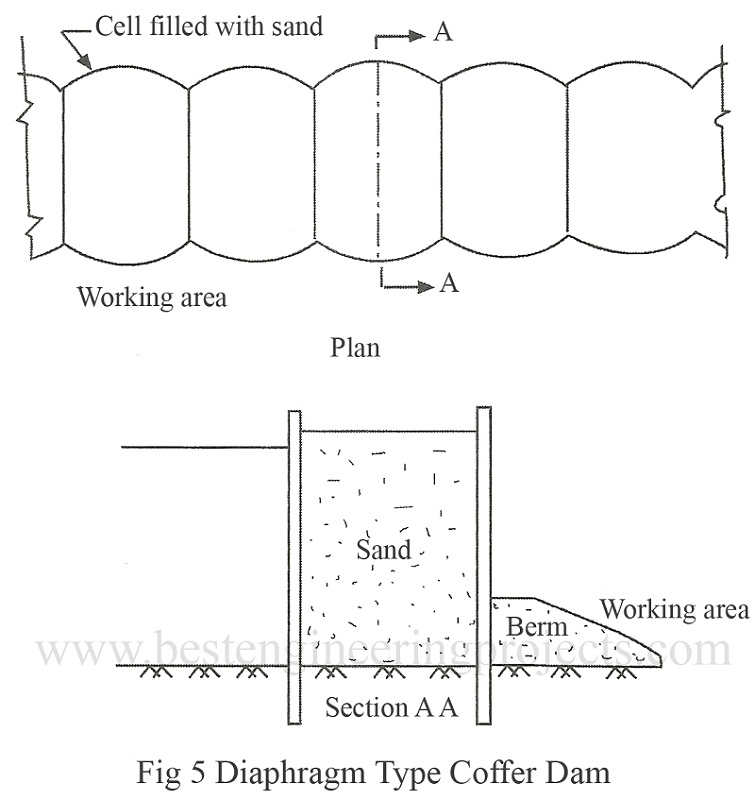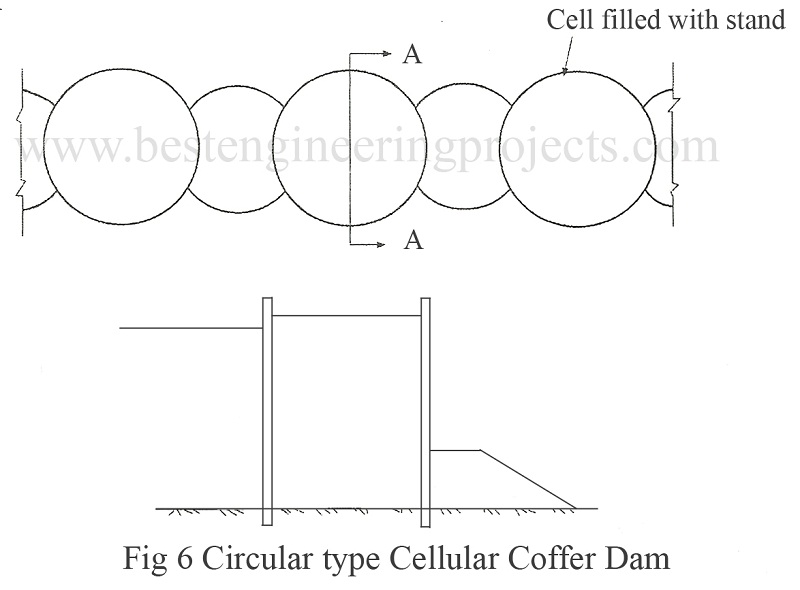A cellular cofferdam is constructed by driving sheet piles of special shapes to form a series of cells. The cells are interconnected to form a watertight wall. These are filled with soils to provide stability against the lateral forces. There are two types of cellular cofferdams, namely diaphragm type cellular cofferdam and circular type cellular cofferdam.
Diaphragm Type cellular cofferdam | Cellular Cofferdams | Types of Cellular Cofferdams
This type of cellular cofferdam consists of circular arcs at the inner and outer sides, which are connected by straight diaphragm walls. A typical sketch is shown in Fig.5.
The connection between the curved parts and diaphragms are made by means of specially fabricated Y- elements. The cofferdam is made from interconnected steel sheet piles. The cells are filled with coarse-grained soils, which increase the weight of the cofferdam and its stability. The leakage of the cofferdam is also reduced.
To avoid rupture of the diaphragm due to unequal pressures on the two sides, it is essential to fill all the cells at approximately the same rate. The advantage of the diaphragm type is that the effective width of the cofferdam may be increased easily by lengthening the diaphragm.
Circular Type cellular cofferdam | Cellular Cofferdams | Types of Cellular Cofferdams
It consists of a set of large diameter circular cells interconnected by arcs of smaller diameter. This is shown in Fig.6. The walls of the connecting cells are perpendicular to main circular cell of large diameter. The segmental arcs are joined by special T-pile to the main cell.
The circular type of cellular cofferdam is self sustaining, independent of the adjacent circular cells. Each cell can be filled independently. The stability of such cells is much larger as compared with the diaphragm type. The circular type is more expensive as compared to the diaphragm type, because these require more sheet piles and skilled technology for setting and driving the pile. As the diameter of the circular cell is limited by interlock tension, their ability to resist large lateral pressures due to high head is restricted.

